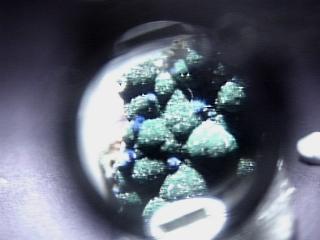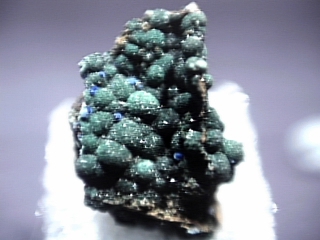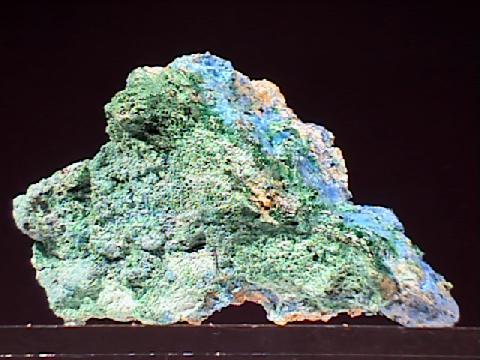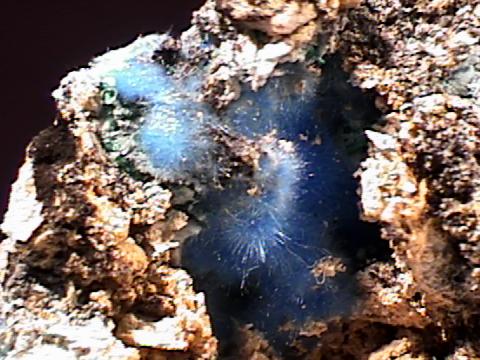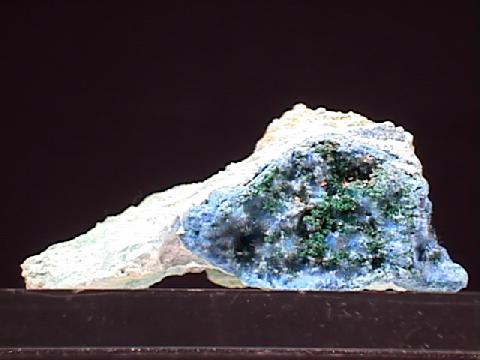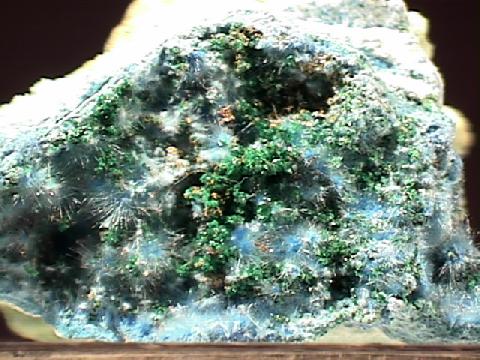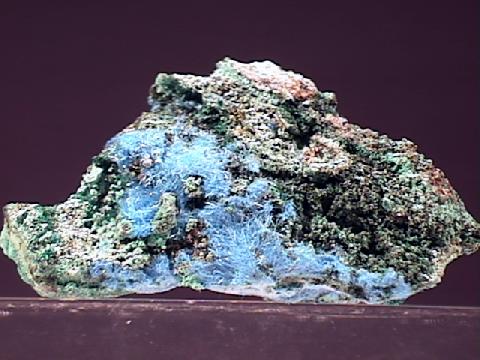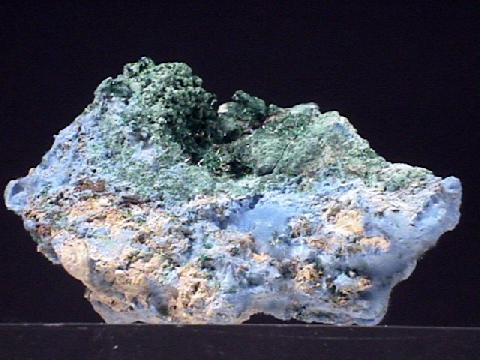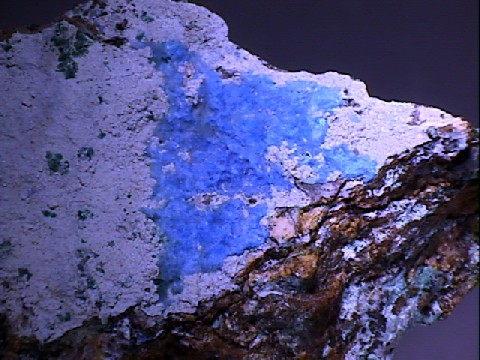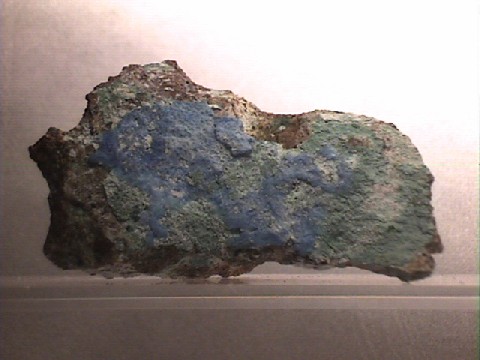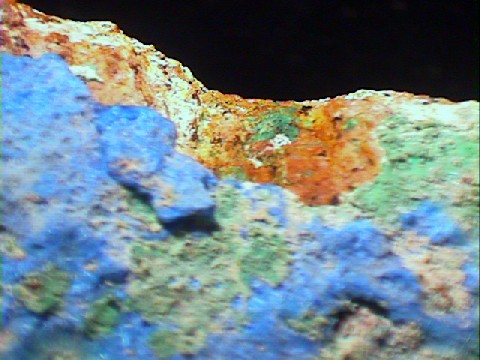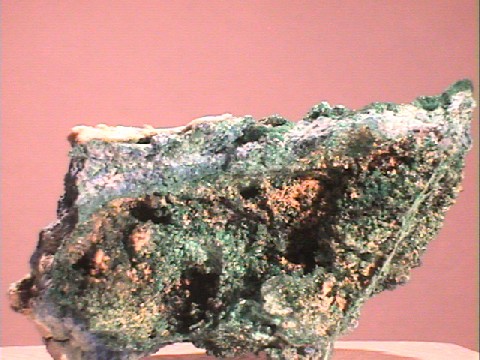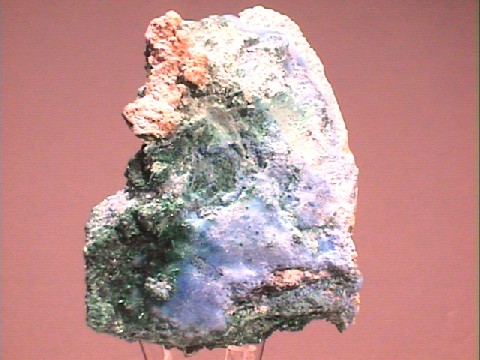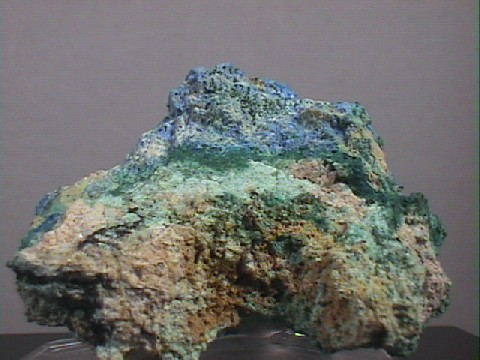 THE MINERAL CYANOTRICHITE
THE MINERAL CYANOTRICHITE
- Chemistry: Cu4Al2SO4(OH)12 - 2H2O, Hydrated Copper Aluminum Sulfate Hydroxide.
- Class: Sulfates
- Uses: Only as mineral specimens.
- Specimens
Cyanotrichite is a wonderfully colored mineral.
Its bright azure to sky blue color is very impressive.
Cyanotrichite typically forms acicular or hair like crystals aggregated into radial clusters, tufts and sprays.
The color is very impressive for such tiny crystals.
It is an aptly named mineral since
cyano and
trich are derived from the Greek for blue and hair, respectively.
It is formed from the oxidation of copper ore minerals along with other oxidation zone minerals.
PHYSICAL CHARACTERISTICS:
- Color is bright azure blue to sky blue.
- Luster is vitreous to silky.
- Transparency crystals are mostly translucent.
- Crystal System is orthorhombic.
- Crystal Habits include acicular to fibrous crystals aggregated into coatings, tufts, radial clusters and sprays as well as small tabular crystals.
- Cleavage is absent.
- Fracture is uneven.
- Hardness is 3 - 4.5
- Specific Gravity is approximately 3.7 - 3.9+ (above average for translucent minerals)
- Streak is blue.
- Associated Minerals are brochantite, smithsonite, malachite and azurite.
- Notable Occurrences include Laurium, Greece; Leadhills, Scotland; Russia; South Africa; Arizona, Nevada and Utah, USA and France.
- Best Field Indicators are crystal habit, associations and color.
 THE MINERAL CYANOTRICHITE
THE MINERAL CYANOTRICHITE
